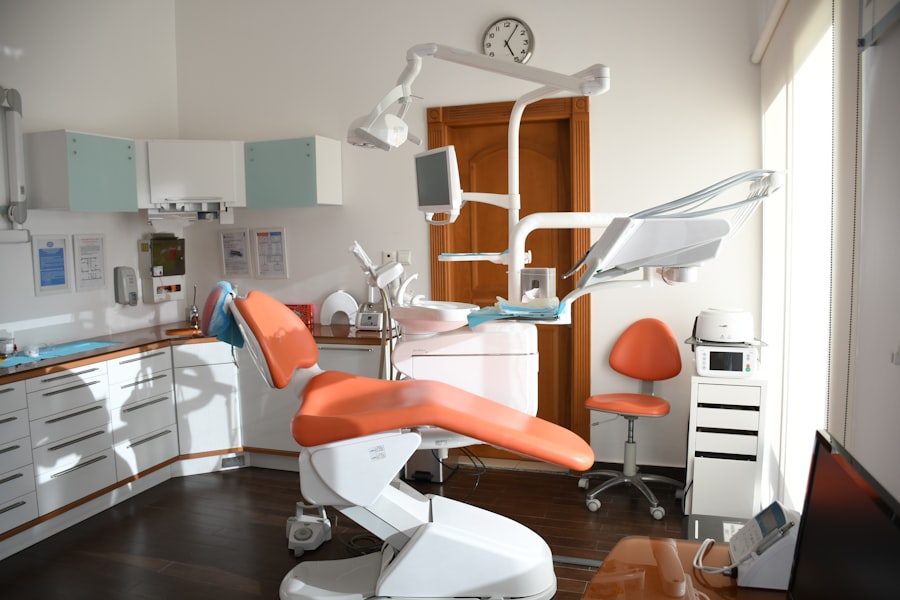In today’s digital age, the significance of online marketing for dental practices cannot be overstated. With an increasing number of patients turning to the internet to find healthcare providers, having a robust online presence is essential for attracting new patients and retaining existing ones. The dental industry is highly competitive, and practices that fail to embrace online marketing strategies risk being overshadowed by those that do.
A well-executed online marketing plan not only enhances visibility but also fosters patient trust and engagement, which are critical components in the healthcare sector. Moreover, online marketing allows dental practices to reach a broader audience than traditional marketing methods. Patients are more likely to search for dental services online, using search engines and social media platforms to gather information about potential providers.
By establishing a strong online presence, dental practices can effectively communicate their services, showcase their expertise, and highlight patient testimonials. This not only helps in attracting new patients but also in building a loyal patient base that feels connected to the practice. In essence, online marketing serves as a bridge between dental professionals and the communities they serve, facilitating better communication and understanding.
Key Takeaways
- Online marketing is essential for dental practices to attract and retain patients in a competitive market.
- Building a strong online presence involves a professional website and active social media engagement.
- SEO strategies help increase your dental practice’s visibility on search engines, driving more traffic.
- Email marketing and online reviews foster patient relationships and build trust.
- Paid advertising and performance analysis optimize marketing efforts and target potential patients effectively.
Creating a Strong Online Presence for Your Dental Practice
Establishing a strong online presence begins with creating a professional website that serves as the digital face of your dental practice. A well-designed website should be user-friendly, mobile-responsive, and optimized for search engines. It should provide essential information such as services offered, office hours, location, and contact details.
Additionally, incorporating high-quality images of the practice, staff, and treatment areas can create a welcoming atmosphere for potential patients. A blog section can also be beneficial, allowing the practice to share valuable content related to dental health, treatment options, and industry news. In addition to a website, dental practices should consider creating profiles on various online platforms such as Google My Business, Yelp, and health-related directories.
These platforms not only enhance visibility but also provide patients with easy access to reviews and ratings. Consistency in branding across all platforms is crucial; this includes using the same logo, color scheme, and messaging. By ensuring that all online touchpoints reflect the practice’s values and professionalism, dental practices can create a cohesive brand image that resonates with potential patients.
Utilizing Social Media to Reach and Engage with Patients

Social media has emerged as a powerful tool for dental practices to connect with their patients and the community at large. Platforms such as Facebook, Instagram, and Twitter allow practices to share engaging content that can educate and inform patients about oral health. For instance, posting tips on maintaining good dental hygiene or sharing before-and-after photos of successful treatments can capture the attention of followers and encourage them to engage with the content.
Additionally, social media provides an opportunity for practices to showcase their personality and culture, making them more relatable to potential patients. Engagement is key when it comes to social media marketing. Dental practices should actively respond to comments and messages from followers, fostering a sense of community and trust.
Hosting live Q&A sessions or webinars on dental topics can further enhance engagement by allowing patients to interact directly with dental professionals. Furthermore, social media advertising can be an effective way to target specific demographics within the community, ensuring that promotional content reaches those most likely to seek dental services. By leveraging social media effectively, dental practices can build lasting relationships with their patients while simultaneously expanding their reach.
Implementing Search Engine Optimization (SEO) Strategies to Increase Visibility
| SEO Strategy | Metric | Before Implementation | After Implementation | Improvement (%) |
|---|---|---|---|---|
| Keyword Optimization | Organic Traffic (visits/month) | 5,000 | 8,500 | 70% |
| On-Page SEO (Meta Tags, Headers) | Bounce Rate (%) | 65% | 45% | −30% |
| Content Creation & Blogging | Pages Indexed | 120 | 200 | 66.7% |
| Backlink Building | Domain Authority | 25 | 40 | 60% |
| Technical SEO (Site Speed, Mobile Optimization) | Page Load Time (seconds) | 5.2 | 2.8 | −46.2% |
| Local SEO | Local Search Rankings (Top 3) | 3 | 10 | 233.3% |
| User Experience Improvements | Average Session Duration (minutes) | 1.5 | 3.2 | 113.3% |
Search Engine Optimization (SEO) is a critical component of online marketing that helps dental practices improve their visibility on search engines like Google. By optimizing their websites for relevant keywords related to dental services, practices can increase their chances of appearing in search results when potential patients are looking for dental care. This involves conducting keyword research to identify terms that prospective patients are likely to use when searching for services such as “family dentist,” “cosmetic dentistry,” or “emergency dental care.” In addition to keyword optimization, on-page SEO techniques such as optimizing meta tags, headers, and image alt texts play a significant role in improving search rankings.
Creating high-quality content that addresses common patient questions or concerns can also enhance SEO efforts. For example, writing blog posts about the benefits of regular dental check-ups or explaining different treatment options can attract organic traffic to the website. Off-page SEO strategies, such as building backlinks from reputable sources or engaging in local SEO practices like optimizing Google My Business listings, further bolster a practice’s online visibility.
By implementing comprehensive SEO strategies, dental practices can ensure they are easily discoverable by potential patients searching for dental services in their area.
Leveraging Email Marketing to Stay Connected with Patients
Email marketing remains one of the most effective ways for dental practices to maintain communication with their patients. By collecting email addresses through appointment bookings or website sign-ups, practices can create targeted email campaigns that provide valuable information and updates. Regular newsletters can include reminders for upcoming appointments, tips for maintaining oral health, or announcements about new services or promotions.
This consistent communication helps keep the practice top-of-mind for patients while also providing them with useful information. Personalization is key in email marketing; addressing patients by name and tailoring content based on their previous interactions with the practice can significantly enhance engagement rates. For instance, sending follow-up emails after appointments to thank patients for their visit or providing post-treatment care instructions demonstrates attentiveness and care.
Additionally, segmenting email lists based on patient demographics or treatment history allows practices to send more relevant content to specific groups. By leveraging email marketing effectively, dental practices can foster stronger relationships with their patients while encouraging them to take proactive steps toward their oral health.
Incorporating Online Reviews and Testimonials to Build Trust

In an era where online reviews heavily influence consumer decisions, incorporating patient testimonials into a dental practice’s marketing strategy is essential for building trust and credibility. Positive reviews on platforms like Google My Business or Yelp can significantly impact a potential patient’s choice when selecting a dentist. Encouraging satisfied patients to leave reviews not only enhances the practice’s online reputation but also provides social proof that can sway undecided individuals.
Displaying testimonials prominently on the practice’s website can further reinforce trust among prospective patients. This could include written testimonials or video interviews with satisfied patients sharing their experiences. Additionally, responding to reviews—both positive and negative—demonstrates that the practice values patient feedback and is committed to providing excellent service.
Addressing negative reviews professionally can also showcase the practice’s dedication to resolving issues and improving patient experiences. By actively managing online reviews and testimonials, dental practices can cultivate a positive image that attracts new patients while retaining existing ones.
Using Paid Advertising to Target Potential Patients
Paid advertising offers dental practices an opportunity to reach potential patients who may not be aware of their services through organic search alone. Platforms like Google Ads allow practices to create targeted ad campaigns that appear in search results when users search for specific keywords related to dental care. This pay-per-click (PPC) model ensures that practices only pay when users click on their ads, making it a cost-effective way to drive traffic to their websites.
Social media advertising is another powerful avenue for reaching potential patients. Platforms like Facebook and Instagram offer advanced targeting options that allow practices to reach specific demographics based on location, age, interests, and behaviors. For example, a practice could run ads promoting teeth whitening services specifically targeting young adults in their area who have shown interest in beauty and wellness topics.
Additionally, retargeting ads can be employed to reach individuals who have previously visited the practice’s website but did not schedule an appointment. By utilizing paid advertising strategically, dental practices can effectively increase their visibility and attract new patients.
Analyzing and Measuring the Success of Your Dental Online Marketing Efforts
To ensure that online marketing efforts are yielding positive results, it is crucial for dental practices to analyze and measure their performance regularly. Utilizing tools like Google Analytics allows practices to track website traffic, user behavior, and conversion rates effectively. By examining metrics such as page views, bounce rates, and average session duration, practices can gain insights into how visitors interact with their website and identify areas for improvement.
In addition to website analytics, monitoring social media engagement metrics—such as likes, shares, comments, and follower growth—can provide valuable information about the effectiveness of social media strategies. Email marketing platforms often offer analytics that reveal open rates and click-through rates for campaigns, helping practices understand what content resonates most with their audience. By continuously analyzing these metrics and adjusting strategies accordingly, dental practices can optimize their online marketing efforts for better results over time.
This data-driven approach not only enhances overall marketing effectiveness but also ensures that resources are allocated efficiently toward initiatives that yield the highest return on investment.


